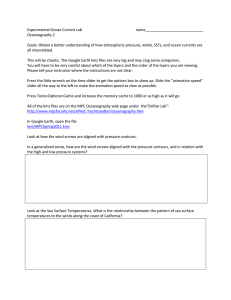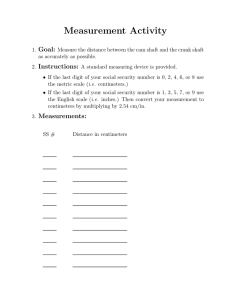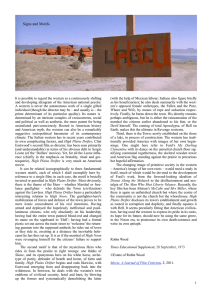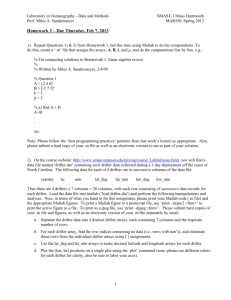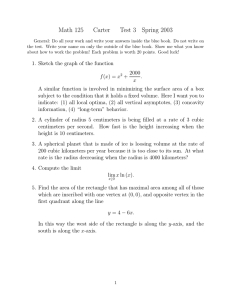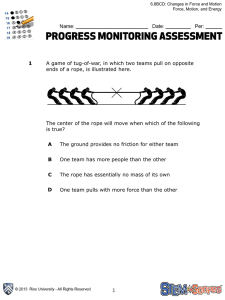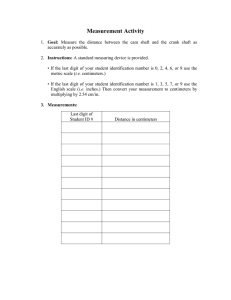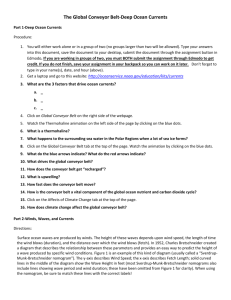Cruise Preparation
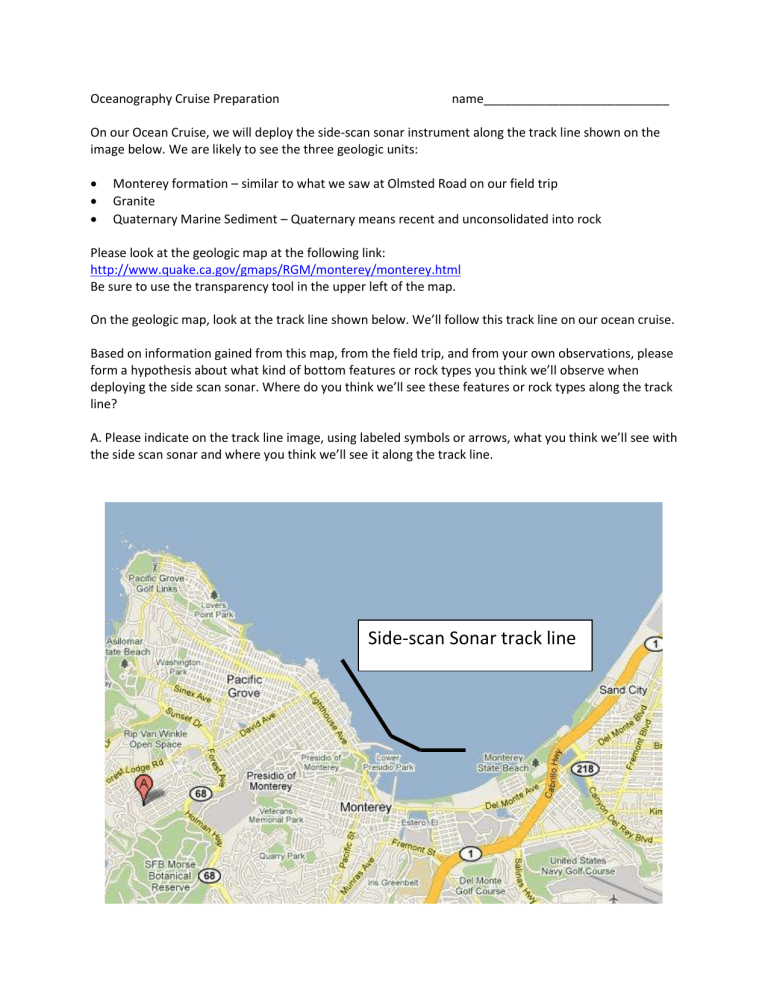
Oceanography Cruise Preparation name___________________________
On our Ocean Cruise, we will deploy the side-scan sonar instrument along the track line shown on the image below. We are likely to see the three geologic units:
Monterey formation – similar to what we saw at Olmsted Road on our field trip
Granite
Quaternary Marine Sediment – Quaternary means recent and unconsolidated into rock
Please look at the geologic map at the following link: http://www.quake.ca.gov/gmaps/RGM/monterey/monterey.html
Be sure to use the transparency tool in the upper left of the map.
On the geologic map, look at the track line shown below. We’ll follow this track line on our ocean cruise.
Based on information gained from this map, from the field trip, and from your own observations, please form a hypothesis about what kind of bottom features or rock types you think we’ll observe when deploying the side scan sonar. Where do you think we’ll see these features or rock types along the track line?
A. Please indicate on the track line image, using labeled symbols or arrows, what you think we’ll see with the side scan sonar and where you think we’ll see it along the track line.
Side-scan Sonar track line
Calculating Ocean Currents.
On our ocean cruise we will deploy an ocean drifter. The drifter will follow and record the ocean currents.
Ocean currents are often expressed in units of centimeters/second. We want to know how far the drifter would travel in a number of days.
How to calculate distance traveled.
Example 1. If a current travels at 10 cm/s for 200 seconds, how far does the drifter travel?
Answer: (10cm/second)(200 seconds) = 2000 centimeters
1.
If a current travels at 15 cm/s for 200 seconds, how many centimeters does the drifter travel? Show your work.
2.
If a current travels at 25 cm/s for 100 seconds, how many centimeters does the drifter travel? Show your work.
Example 2. If a current travels at 10 cm/s for 2 minutes, how many centimeters does the drifter travel? 1 minute = 60 seconds
Answer: (10cm/second)(60 seconds/minute)(2 minutes) = 1200 centimeters
3.
If a current travels at 15 cm/s for 2 minutes, how many centimeters does the drifter travel? Show your work.
4.
If a current travels at 25 cm/s for 5 minutes, how many centimeters does the drifter travel?
Show your work.
Example 3: If a current travels at 20 cm/s for 1 hour, how many centimeters does the drifter travel? 1 hour = 60 minutes
(20 cm/second)(60 seconds/minute)(60 minutes/hour)(1 hour) = 72000 centimeters.
Example 4: If a drifter travels 72000 centimeters, how many meters is this?
1 meter = 100 centimeters
(72000 centimeters)(1 meter/100 centimeters) = 720 meters
Example 5: if a drifter travels 72000 centimeters, how many kilometers is this?
1 kilometer = 1000 meters
(72000 centimeters)(1 meter/100 centimeters)(1 kilometer/1000 meters) = 0.72 kilometers
5.
If a drifter in a current travels at 10 cm/s for 3 hours, how many centimeters does the drifter travel?
Show your work.
6.
If a drifter in a current travels at 10 cm/s for 3 hours, how many kilometers does the drifter travel?
Show your work.
If a drifter in a current travels at 10 cm/s for 24 hours, how many kilometers does it travel?
Show your work.
If a drifter in a current travels at 20 cm/s for 24 hours, how many kilometers does it travel?
Show your work.
If a drifter in a current travels at 20 cm/s for 24 hours, how many miles does it travel?
1 mile = 1.6 kilometers. Show your work.
If a drifter is travelling at 20 cm/s, how fast is this in miles/hour?
Show your work.
On your computer, Google CenCOOS. Go to the CenCoos site, and find the HF Radar Surface
Currents data. You should wind up here: http://www.cencoos.org/sections/conditions/CENCAL_currents/mb_node.shtml
We plan to release the drifter at 122˚ 0’W, 36˚ 45’N .
Look at the current velocities on the map on the CenCOOS site and calculate how far that drifter would travel from 122˚ 0’W, 36˚ 45’N in 12 hours. What latitude and longitude would it be at after 12 hours? After 24 hours? Show your work.
On our Ocean Cruise, we will deploy a drifter at the star on the image below, 122˚ 0’W, 36˚ 45’N. The image shows ocean currents for Monterey Bay on a particular day in 1994. Whereas the data is for a particular day, currents in Monterey Bay are known to vary widely. However, if all of the data were averaged over a long period of time, the currents would look something like what is shown on the diagram below.
A. Please form a hypothesis that predicts both the path of the drifter over the few days following release and the location of the drifter two days and four days after release. Please draw your predicted path and future locations on the map below, as well as supply your predicted locations in latitude and longitude.
You may want to make your predictions one day at a time.
10 Km
Latitude: Longitude:
Two days after release
Four days after release
B. Show your work below, explaining how your arrived at your conclusions.

